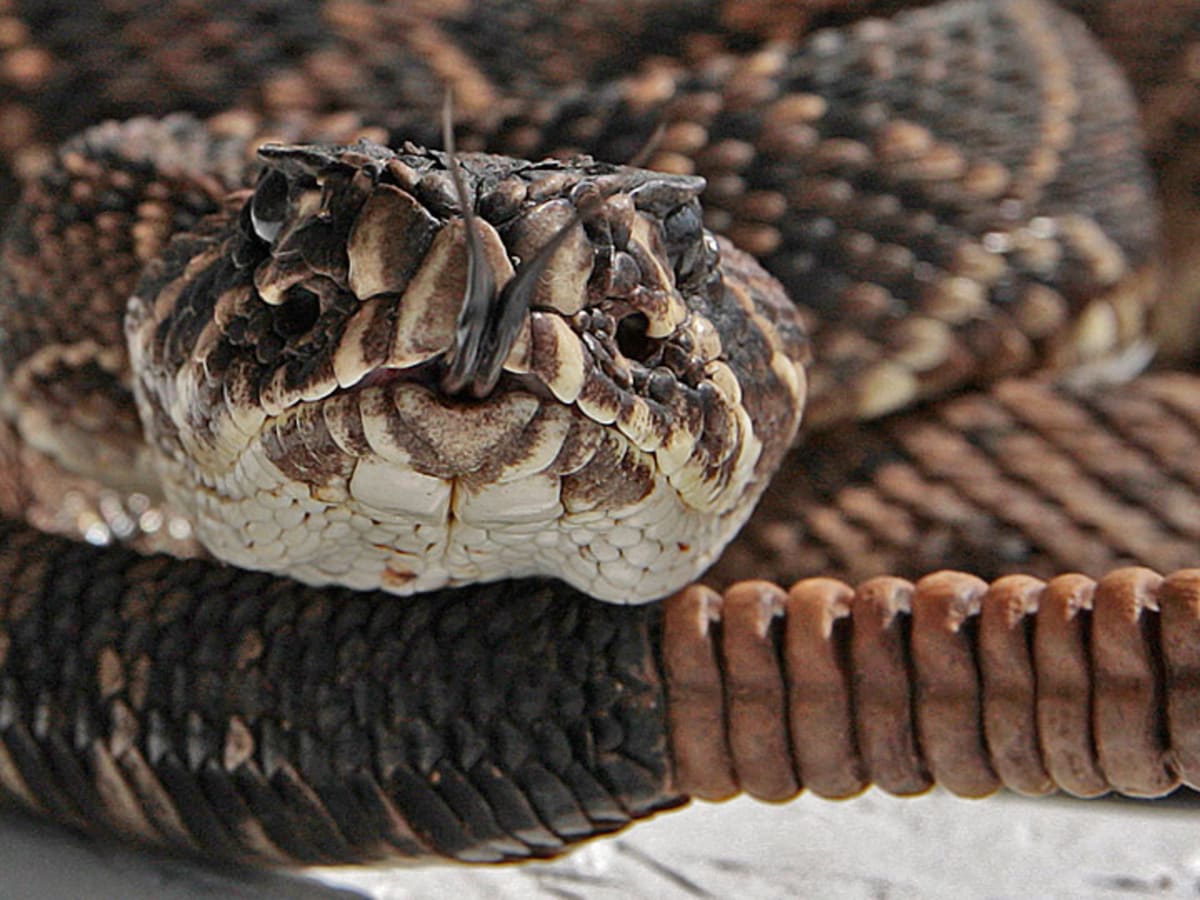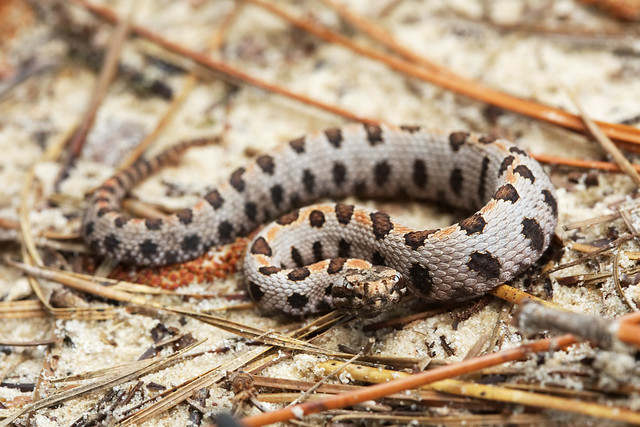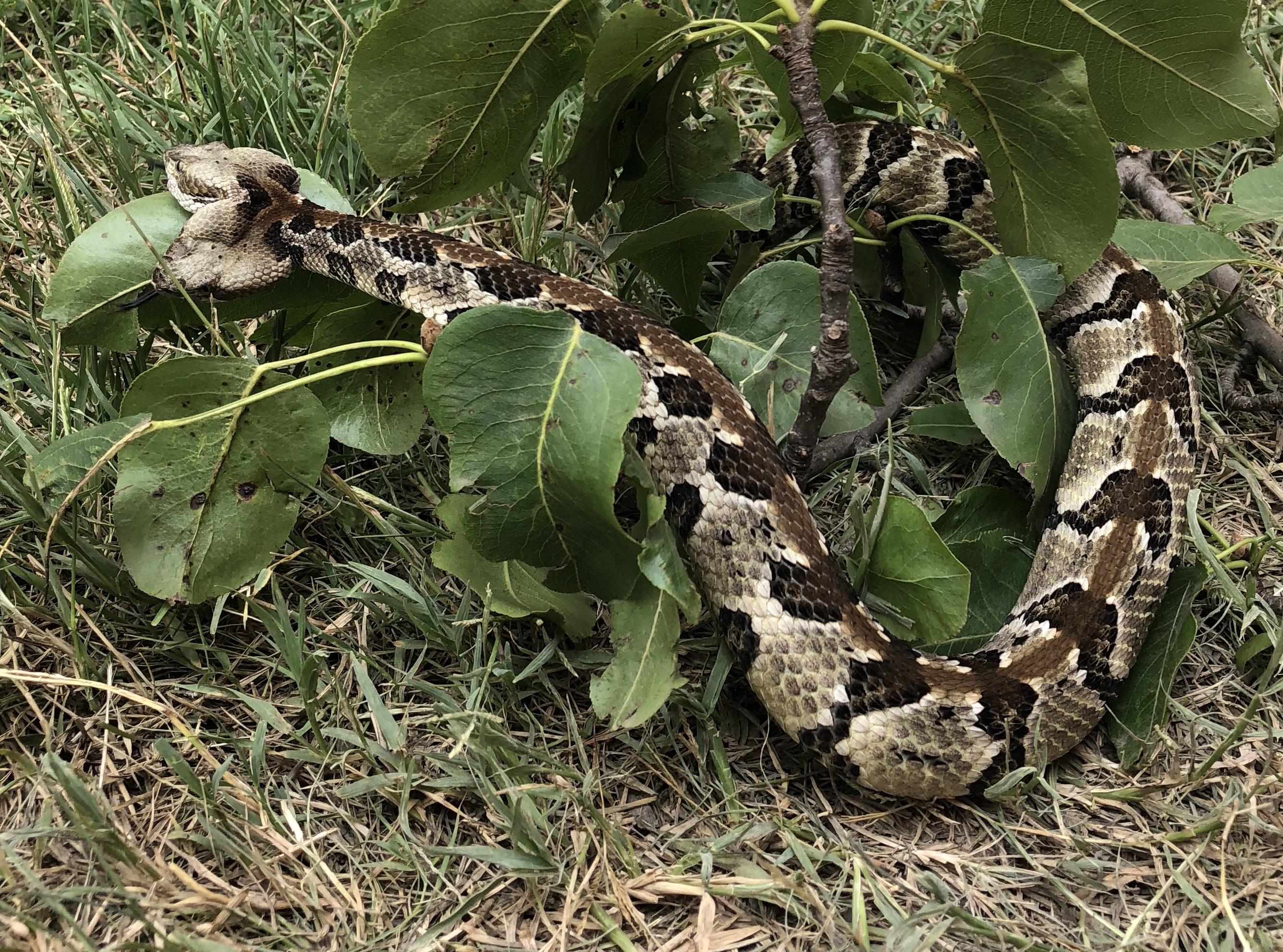Arkansas is home to a diverse range of wildlife, including several species of venomous snakes. Among these are three types of rattlesnakes that can be found throughout the state.
In this article, we will provide a guide to identifying these three different types of rattlesnakes found in Arkansas. Whether you are a nature enthusiast or simply want to stay safe while exploring the outdoors, understanding the characteristics of these venomous snakes is essential.
You are reading: Discover The 3 Types Of Rattlesnakes In Arkansas

3 Types Of Rattlesnakes In Arkansas
Western Pygmy Rattlesnake

The Western Pygmy Rattlesnake (Sistrurus miliarius streckeri) is a venomous pit viper subspecies found in the southcentral United States, including Arkansas. It is one of the smallest species of rattlesnake in North America, with a slender tail and tiny rattle.
The general color of the Western Pygmy Rattlesnake is brownish, and it has dark blotches down its back and one to three rows of dark spots along each side of the body. This species is often found in or near glades, in second-growth forests near rock ledges, and along the area between forests and open lands.
Like other rattlesnakes, the Western Pygmy Rattlesnake has hollow fangs to inject venom into their prey, and heat-sensitive pits between the eyes and nostrils that allow them to detect and accurately strike warm-blooded prey (such as rodents) even in total darkness.
The Western Pygmy Rattlesnake is considered a species of least concern, but it has faced severe range declines in some areas due to habitat loss and possible human persecution.
Western Diamondback Rattlesnake
The Western Diamondback Rattlesnake (Crotalus atrox) is a venomous pit viper species found in the southwestern United States and northern Mexico, including Arkansas. It is the most common rattlesnake species found in homes and in direct conflict with human development in the American Southwest, particularly in the rapidly expanding metro areas of Phoenix and Tucson.
Read more : The 5 Types Of Winged Roach
The Western Diamondback Rattlesnake is a heavy-bodied snake with a triangular-shaped head, and it can exceed seven feet in length. It has a series of black and white bands just above its rattles, which are used as a defensive warning sign.
Like other rattlesnakes, the Western Diamondback Rattlesnake has hollow fangs to inject venom into their prey, and heat-sensitive pits between the eyes and nostrils that allow them to detect and accurately strike warm-blooded prey (such as rodents) even in total darkness.
The venom of most diamondback rattlesnake species tends to be less toxic than that of other rattlesnake species, but they can inject large amounts into victims, making their bites quite dangerous.
The Western Diamondback Rattlesnake is not currently threatened or endangered, but it has faced habitat loss and human persecution in some areas.
Timber Rattlesnake

The Timber Rattlesnake (Crotalus horridus), also known as the Canebrake Rattlesnake or Banded Rattlesnake, is a venomous pit viper species found in eastern North America, including Arkansas.
It is the only rattlesnake species in most of the populous Northeastern United States and is second only to its relatives to the west, the prairie rattlesnake, as the most northerly distributed venomous snake in North America.
Timber Rattlesnakes are the largest venomous snake in New York, measuring from 3 to 4 feet or more in length. They have a broad, triangular head with many small scales on the crown, bordered by a few large scales over the eyes, the loreal pit, and rostrum (nose).
Timber Rattlesnakes are generally found in deciduous hardwood forests in rugged terrain, but they can also be found in lowlands, wetlands, or residential areas near dens. They use crevices in rocky faces or talus with westerly to easterly southern exposures for denning or overwintering, and open areas with rocky surfaces for basking, shedding, and birthing.
Read more : Discover The 2 Types Of Rattlesnakes In Oregon
Timber Rattlesnakes are known to use fallen logs as a waiting site for prey to pass by, giving them an elevated perch from which to effectively strike their prey, which is almost entirely terrestrial rather than arboreal.
Like other rattlesnakes, the Timber Rattlesnake has hollow fangs to inject venom into their prey, and heat-sensitive pits between the eyes and nostrils that allow them to detect and accurately strike warm-blooded prey (such as rodents) even in total darkness.
Timber Rattlesnakes are not currently protected in the southern states and the species is not considered to be in serious danger, but populations are steadily decreasing over the geographic range, primarily due to habitat destruction and other human activities.
FAQS
1. How many types of rattlesnakes are found in Arkansas?
Arkansas is home to three types of rattlesnakes: the Western Pygmy Rattlesnake, Western Diamondback Rattlesnake, and Timber Rattlesnake.
2. Are all three types of rattlesnakes in Arkansas venomous?
Yes, all three types of rattlesnakes found in Arkansas are venomous. However, it’s important to note that snakes generally only bite in self-defense, and bites are rare.
3. What should I do if I encounter a rattlesnake in Arkansas?
If you encounter a rattlesnake in Arkansas, it’s important to give the snake plenty of space and avoid provoking it. Back away slowly and leave the area. If you are bitten, seek medical attention immediately.
4. Where are rattlesnakes typically found in Arkansas?
Rattlesnakes can be found in a variety of habitats in Arkansas, including forests, rocky areas, and lowland thickets. They may also be found near human development in some cases.
5. How can I identify the different types of rattlesnakes in Arkansas?
Each type of rattlesnake in Arkansas has unique physical characteristics that can help with identification. The Western Pygmy Rattlesnake is small and slender, while the Western Diamondback Rattlesnake is heavy-bodied with distinctive black and white bands. The Timber Rattlesnake is the largest of the three and has a broad, triangular head.
6. Are rattlesnakes in Arkansas endangered?
While rattlesnakes in Arkansas are not currently considered to be in serious danger, populations are decreasing due to habitat destruction and other human activities. It’s important to respect these animals and their habitats to help protect them for future generations.
Source: https://petstutorial.com
Category: Animals










